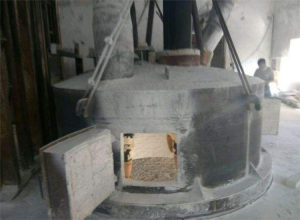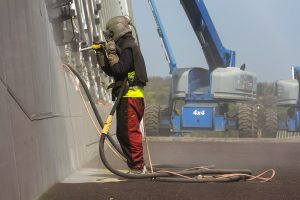The composition of white corundum is made by melting aluminum oxide powder at 2000 ℃ or above in arc. The main chemical composition of white corundum is AL2O3, the content of which is 99%, plus a small amount of Fe, Si, Ti, etc.
White corundum is suitable for manufacturing ceramics, resin consolidated abrasive tools, grinding, polishing, sandblasting, precision casting, etc. It can also be used for manufacturing high-grade refractory materials. White corundum generation # “WA” is consistent with the international general standard and national standard.
Sandblasting grade white corundum is divided into 16#46#60#80#100#120#150#180#200#220#280#
Product granularity according to the international standards and national standards production, according to the user’s requirements for granularity processing. The general particle size # is F4~F320, and the chemical composition varies according to the particle size. The outstanding characteristic is the crystal size small impact resistance, because USES the self-grinding machine to process the crushing, the particle mostly is the spherical particle, the surface is dry clean, easy to bond the agent.
Corundum is divided into natural corundum and artificial corundum. Natural corundum is a kind of pure alumina (Al2O3). The main mineral component of synthetic corundum is physical corundum. Artificial corundum is divided into brown corundum (A), white corundum (WA), chrome corundum (PA), zirconium corundum (ZA), black corundum (BA), single crystal corundum (SA), microcrystalline corundum (MA), etc. Brown corundum is mainly made of bauxite, iron scrap and anthracite by melting and reducing impurities in an electric arc furnace. White corundum is produced by melting alumina powder in an electric arc furnace. Other corundum is a material with different properties derived from different content of alumina and a certain amount of other oxides added in the melting process. A large number of applications of corundum for brown corundum, white corundum.
- Main features and USES
Corundum has a certain hardness and toughness, which can be granulated and processed into particles of different size range and uniform shape. It has high temperature stability and chemical stability. The mohs hardness of brown corundum is 9, and the microhardness is 1800-2200kg/mm2. White corundum has a mohs hardness of 9 and a microhardness of 2200-2400kg/mm2, which is second only to diamond. Brown corundum and white corundum are the main materials for making consolidated abrasive tools and advanced refractory materials and products. They can also be used for anti-slip, grinding, investment casting, advanced ceramics and so on.
- Main specifications and technical indicators
Specification: at present, the regulation is applicable to manufacturing abrasive or used as abrasive corundum, according to the particle size can be divided into 41 specifications: 4 #, 5 #, 6 #, 7 #, 8 #, 10 #, 12 #, 14 #, 16 #, 20 #, 30 # #, # 22, 24, 36 #, 40 #, 46 # and 54 #, 60 #, 70 #, 80 #, 90 #, 100 #, 120 #, 150 #, 180 #, 220 #, 240 #.
W63, W50, W40, W28, W20, W14, W10, W7, W5, W3.5, W2.5, W1.5, W1.0, W0.5.
The size of the size of the composition should comply with gb2477-83 “abrasive size and composition” provisions, the corundum specifications and size of refractory materials and products can be determined according to user requirements.
Chemical composition: the physical properties of corundum are mainly determined by its chemical composition. For the conventional processed and broken corundum, the general Al2O3 content of coarse particle size is higher, while the content of Al2O3 of fine particle size is lower due to the relative increase of impurity content.


